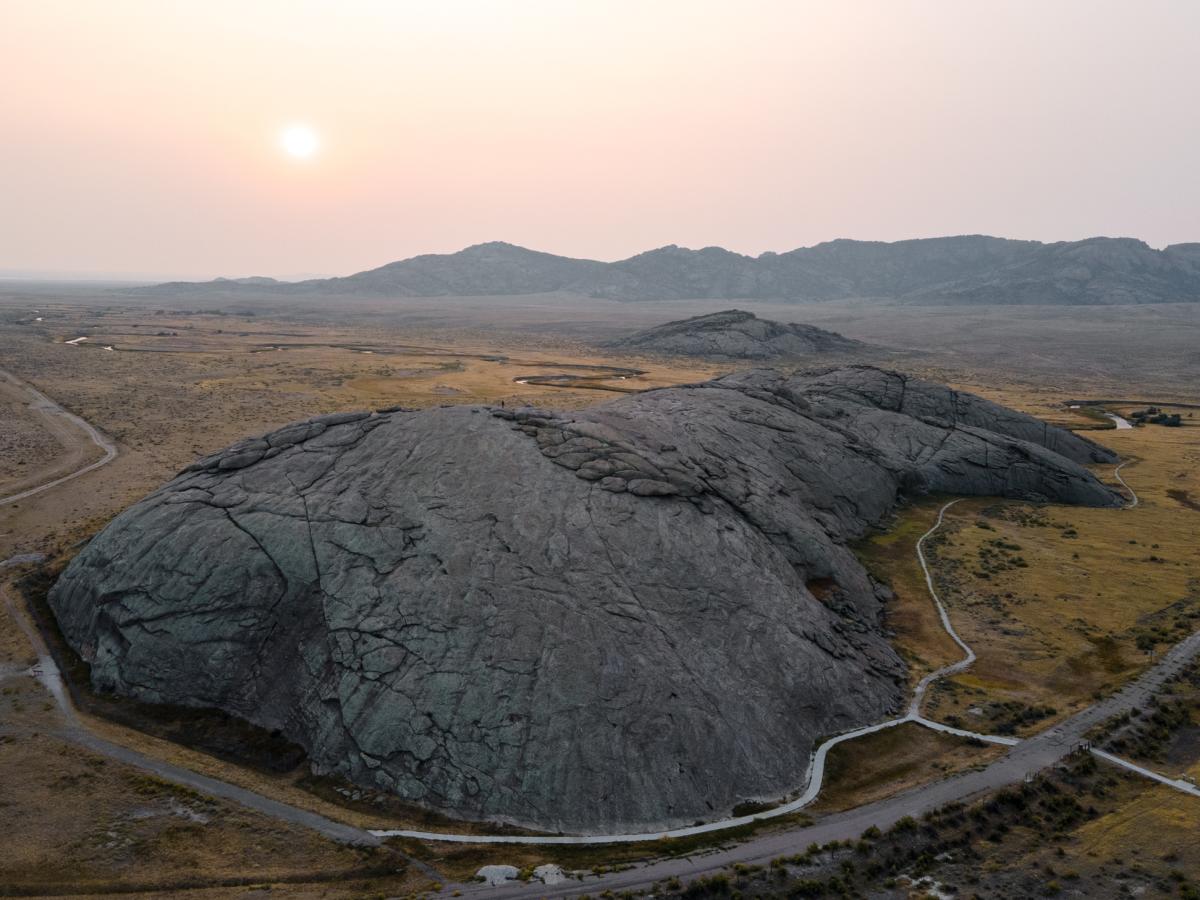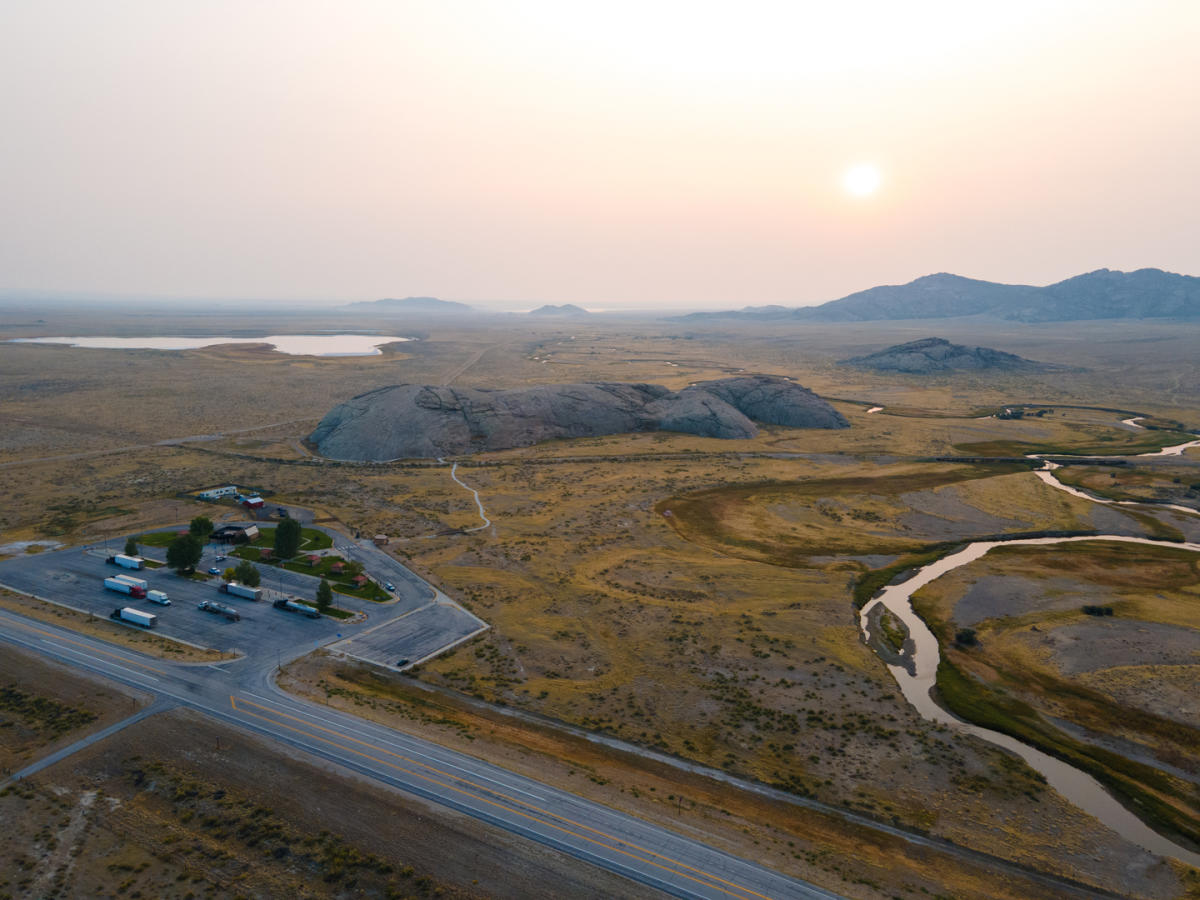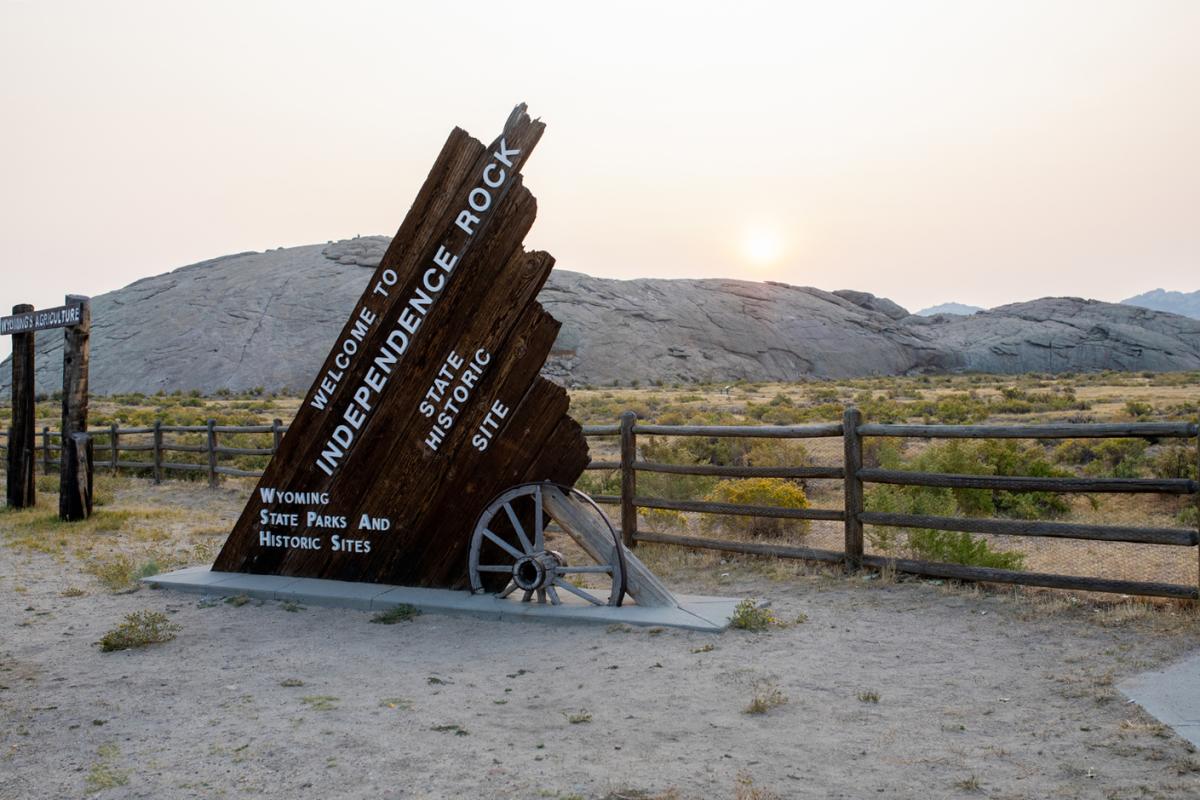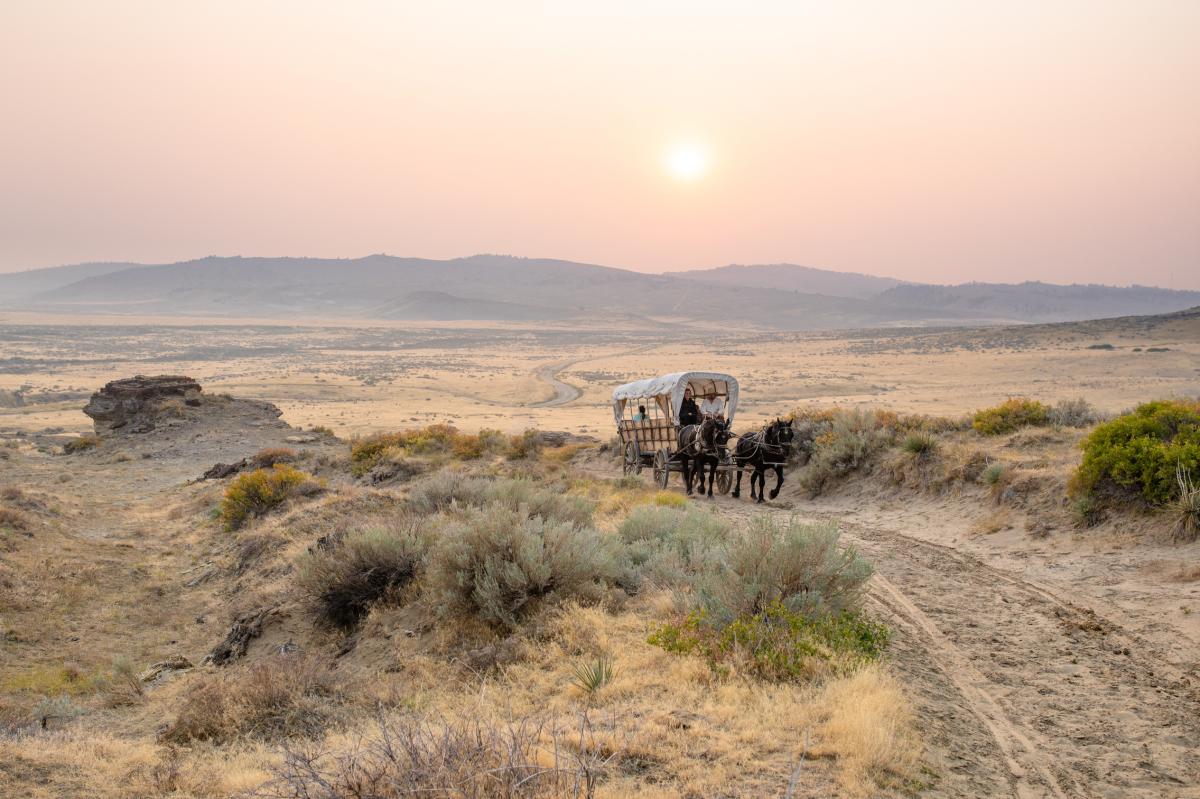
Fifty miles outside of Casper sits a granite behemoth carved with the names of hopeful travelers seeking a new, brighter future. Serving as a reminder for over 150 years of the paths forged by our Western-destined ancestors, Independence Rock today is an awe-inspiring attraction for Wyoming locals and visitors to the Cowboy State alike. Before you visit, here are a few things you should know about the site’s history, setting, and significance to the people of Wyoming and beyond.

HOW DID IT GET HERE?
Driving through the rolling plains of Wyoming and coming upon a massive granite feature standing 136 feet tall spanning 24.81 acres, it’s easy to understand why emigrants before us were intrigued to pull over and visit the formation. We have to assume they wondered the same thing many of us do when first seeing Independence Rock: how in the world did that even get here?
The peaks of the Granite Range rose in central Wyoming over fifty million years ago, beginning the long geologic processes of exfoliation. The intense weight of these mountains caused their peaks to sag into the earth's crust and, over time, wind-blown sand smoothed and rounded the summits. The infamous Wyoming wind and intense weather patterns eventually exposed this specific ancient peak, creating one of America's great landmarks known today as Independence Rock.

WHOSE NAMES ARE CARVED ALL OVER IT?
The peoples who stopped to leave their mark on Independence Rock are nearly as diverse as the United States itself. Native American tribes that ranged the central Rocky Mountains first visited the site, leaving carvings and hieroglyphics on what they came to call Timpe Nabor, the Painted Rock. In the 1820s the area became the main trail for American fur hunters headed west, and thousands of pioneers followed the roads that the tribes and mountain men had blazed to the West Coast.
The oldest recorded inscription (now weathered away) was carved into the ancient landmark in 1824 by M. K. Hugh, and over the next three decades almost half a million Americans passed Independence Rock on their way to new homes on the frontier–thousands of them adding their names to Father De Smet's great register. Be sure to do a refresher on your family history before visiting the site, as you just might find a distant family member’s carvesmanship imprinted in the stone.

WHY IS IT CALLED INDEPENDENCE ROCK?
The accounts are varied, but the most popular belief holds that William L. Sublette, on his way to Wind River with 81 men and 10 wagons, camped and celebrated Independence Day near the rock on July 4, 1830: "having kept the 4th of July in due style."
One thing is for sure, though–the name is fitting for the historical site, marked with the names of thousands of hopefuls travelling West to seek prosperity and the very thing it is named for: Independence.

WHY IS IT SO IMPORTANT TO WYOMINGITES?
Through the years, much of the trail through the land surrounding Independence Rock has disappeared beneath modern cities and highways. However, the significance it holds is as embedded in the people of Wyoming as the hundreds of miles of ruts and swales still marking its course.
Independence Rock and its stark contrast to its setting in the Wyoming prairie is a vivid reminder of the journey those took before us, carving a path for the life we are blessed to live here in modern times. The historic legacy of the site belongs not only to Wyomingites but to all Americans, and the names left behind provide a powerful opportunity to honor the ones who forged the way.
When planning your trip to Casper, take the opportunity to truly experience the history of The West with an afternoon at this national historic landmark–you might just find the names of some of your ancestors! To learn more about Independence Rock, we encourage you to visit the WyoParks website and stop into our offices at 139 West 2nd Street, Suite 1B in Casper, Wyoming.



